White Cane Day Celebration
Thank you to everyone who supported Rhode Island’s 2023 White Cane Day Celebration on Sunday, October 15, at the Crowne Plaza in Warwick.
Many thanks to our sponsors: State Representative Julie Casimiro and Snooker’s.
Also thank you to the local agencies who staffed tables to educate people about their services: Blinded Veterans Association, Ocean State Center for Independent Living, Rhode Island Services for the Blind and Visually Impaired, Rhode Island Vision Education and Services Program, Rhode Island Lions, National Federation of the Blind – Rhode Island Chapter, Rhode Island Parents of Blind and Visually Impaired Children, Talking Books, University of Massachusetts, and IN-SIGHT.
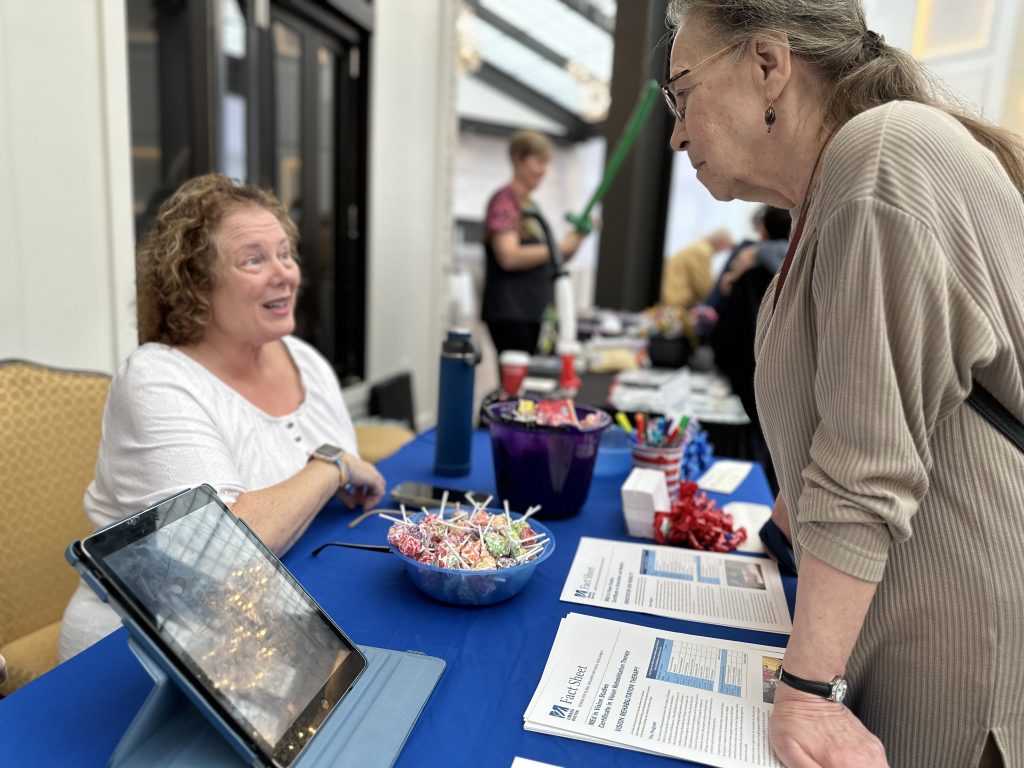

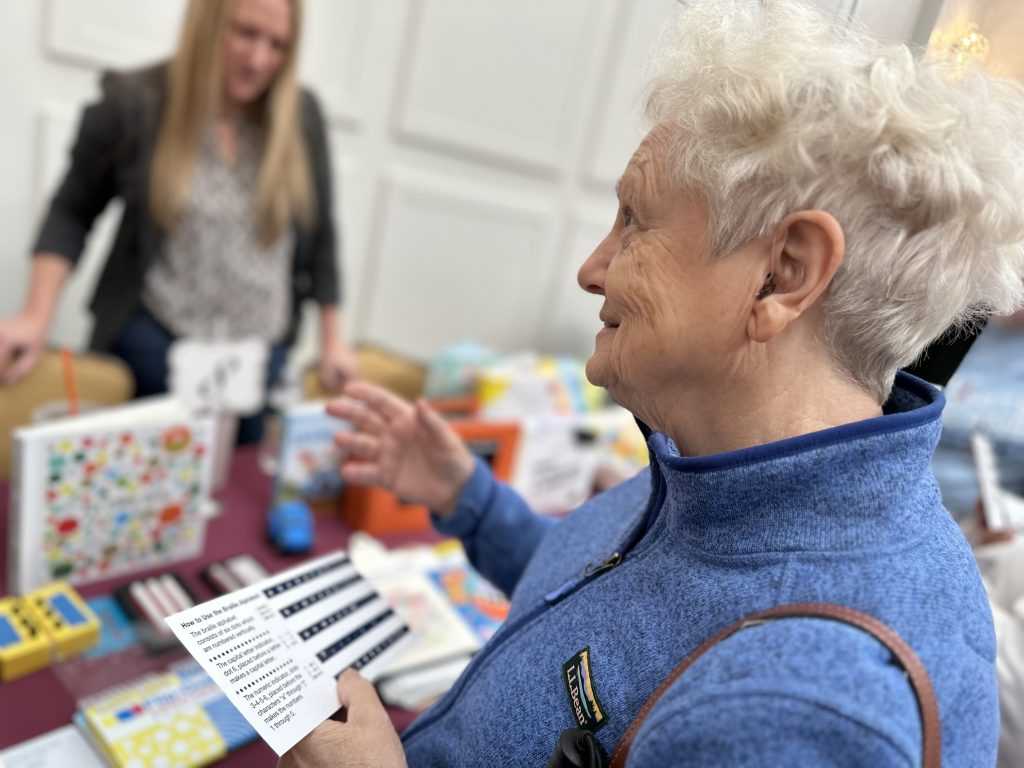

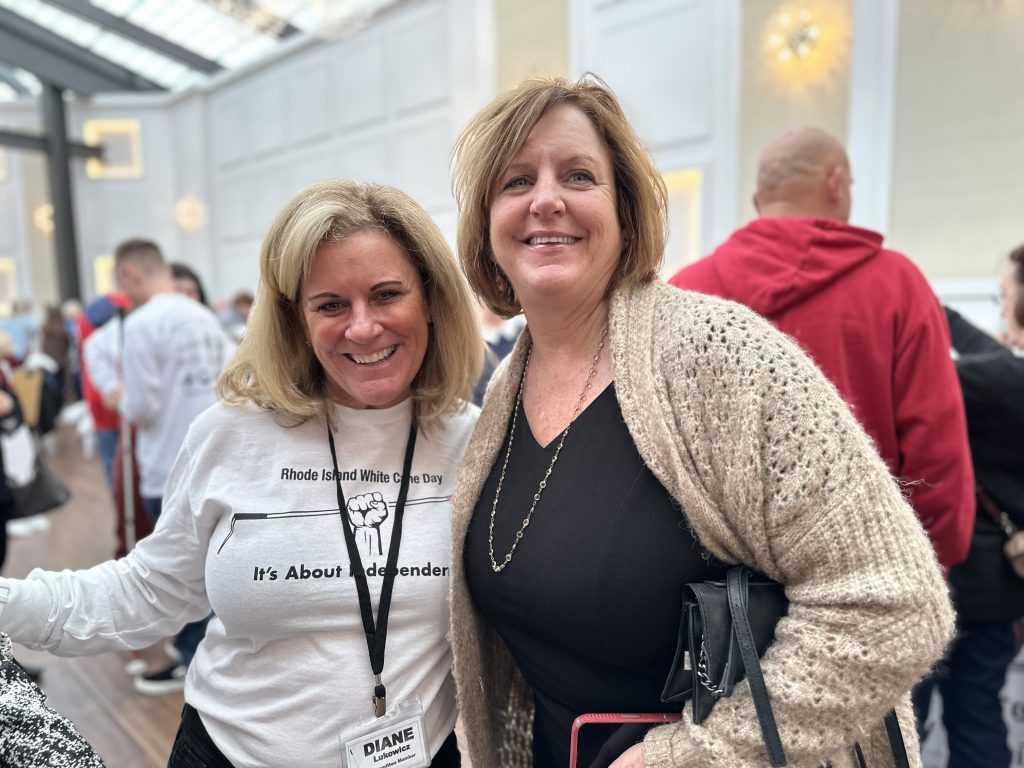



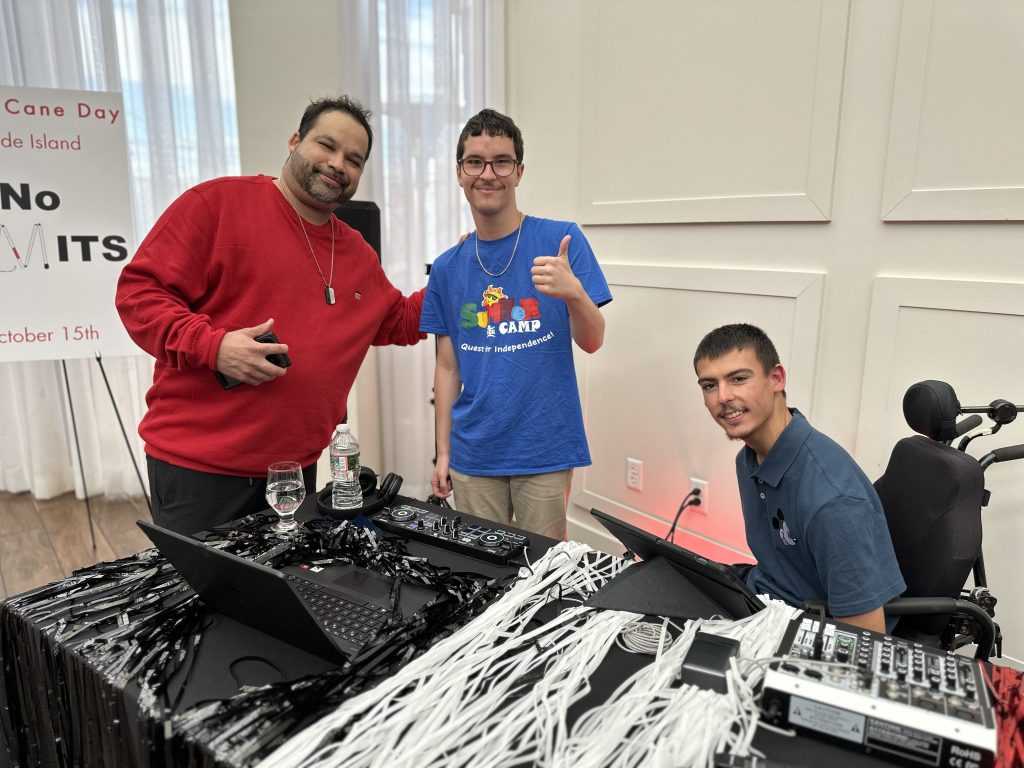


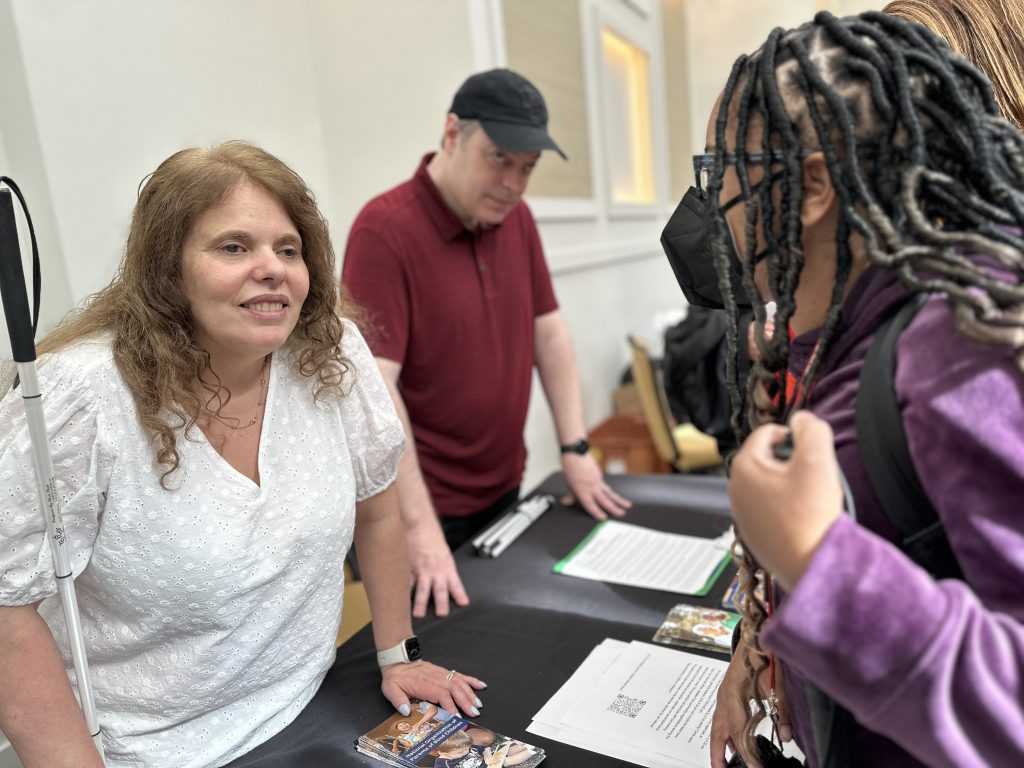
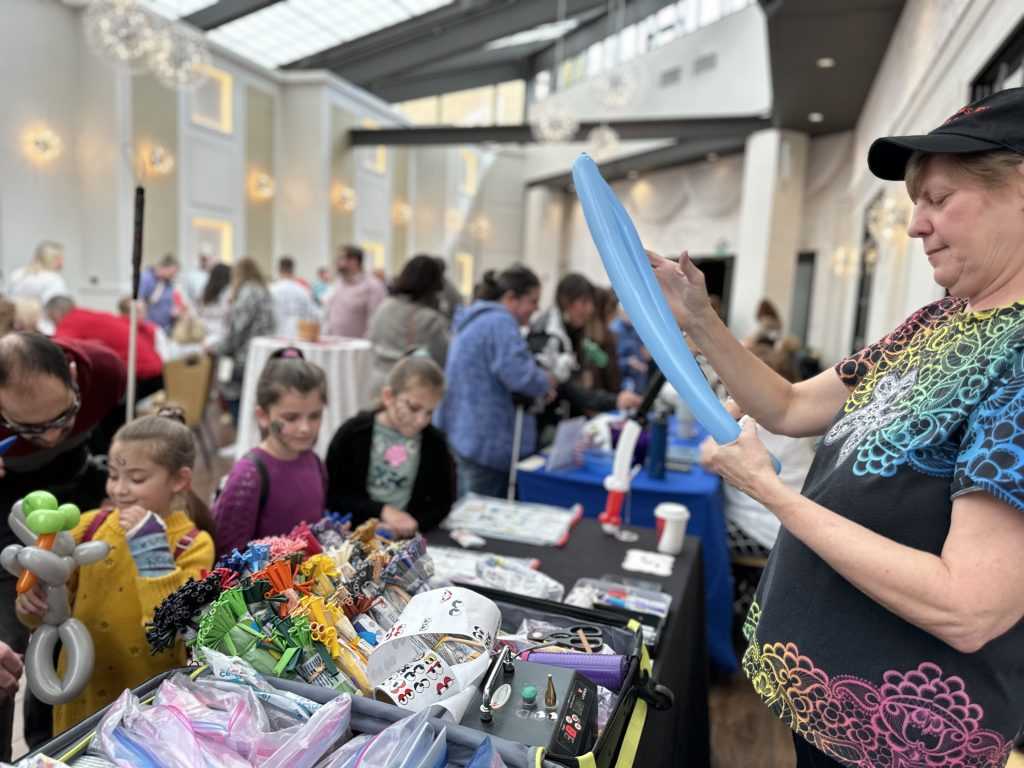



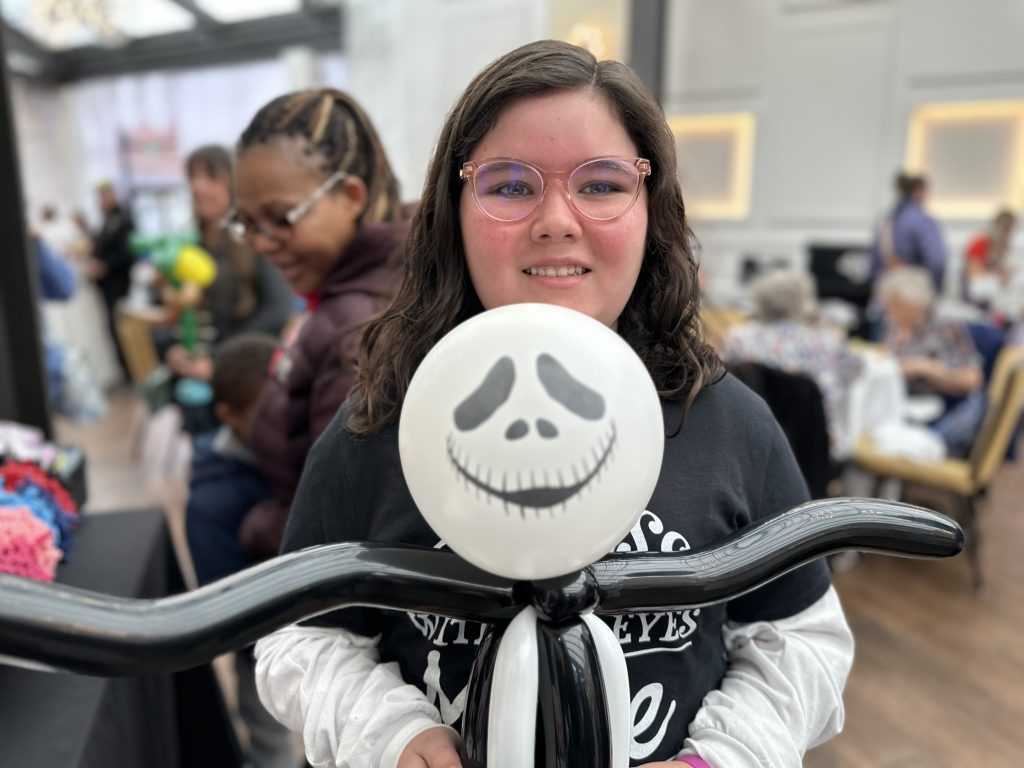

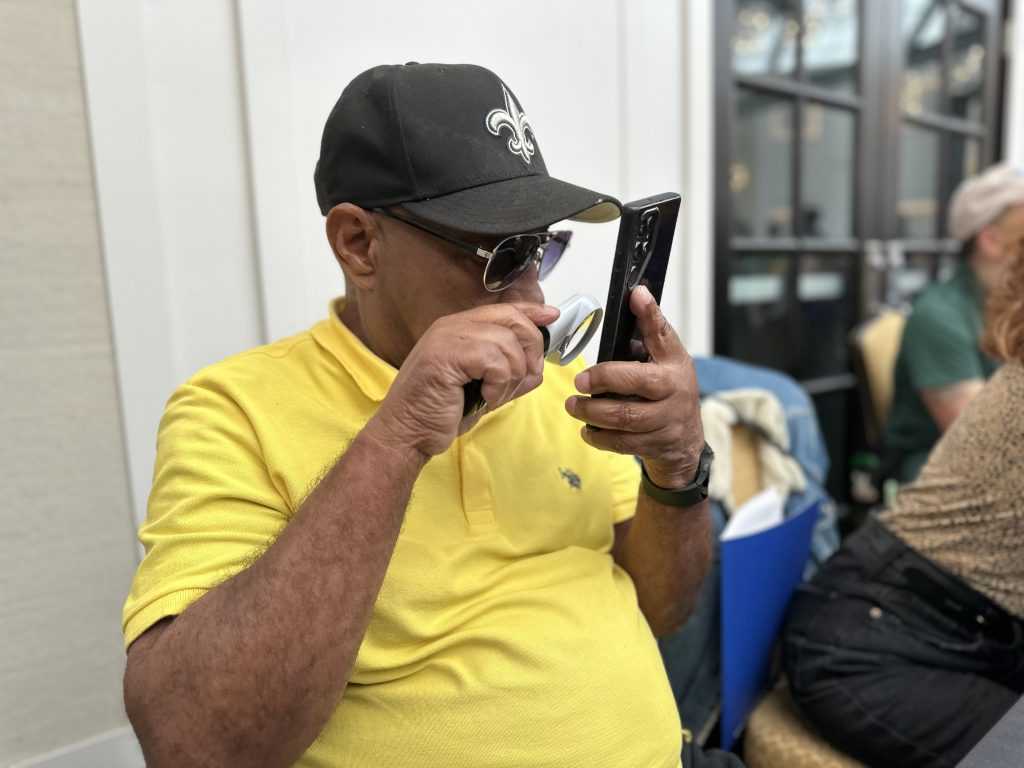
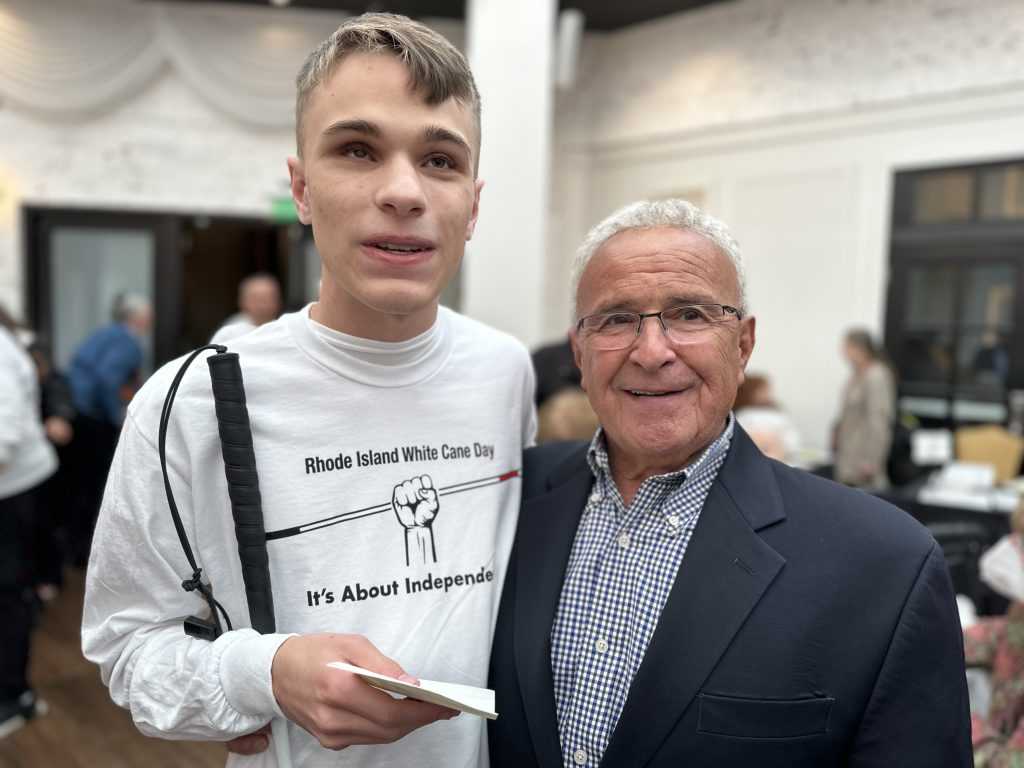
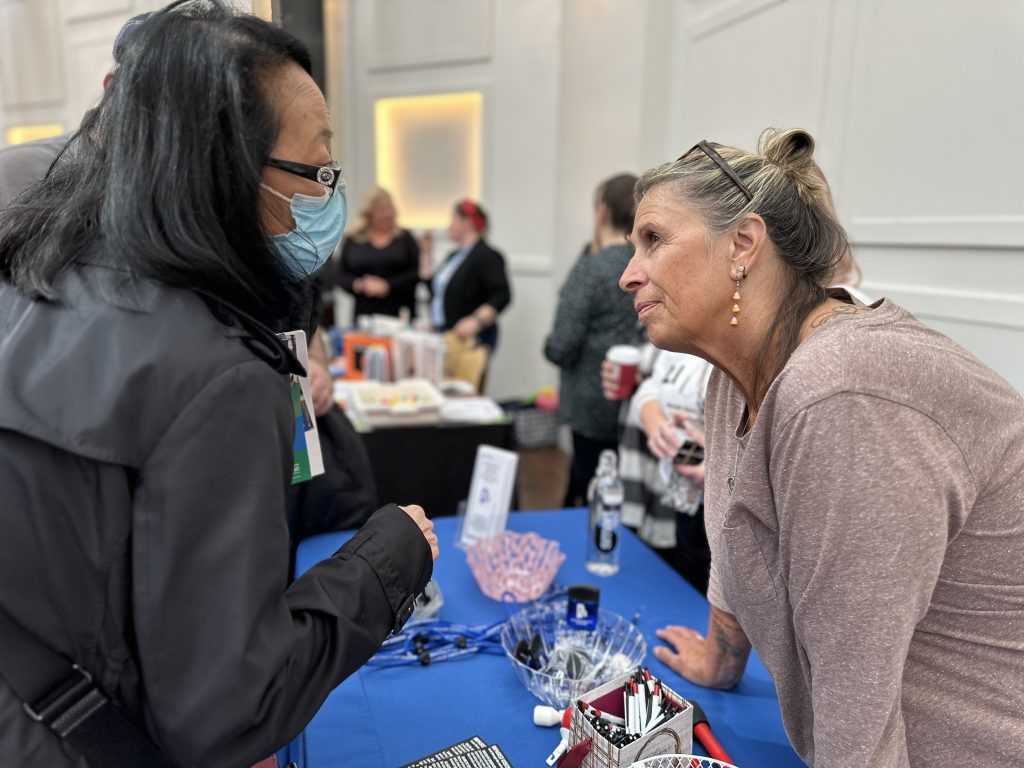
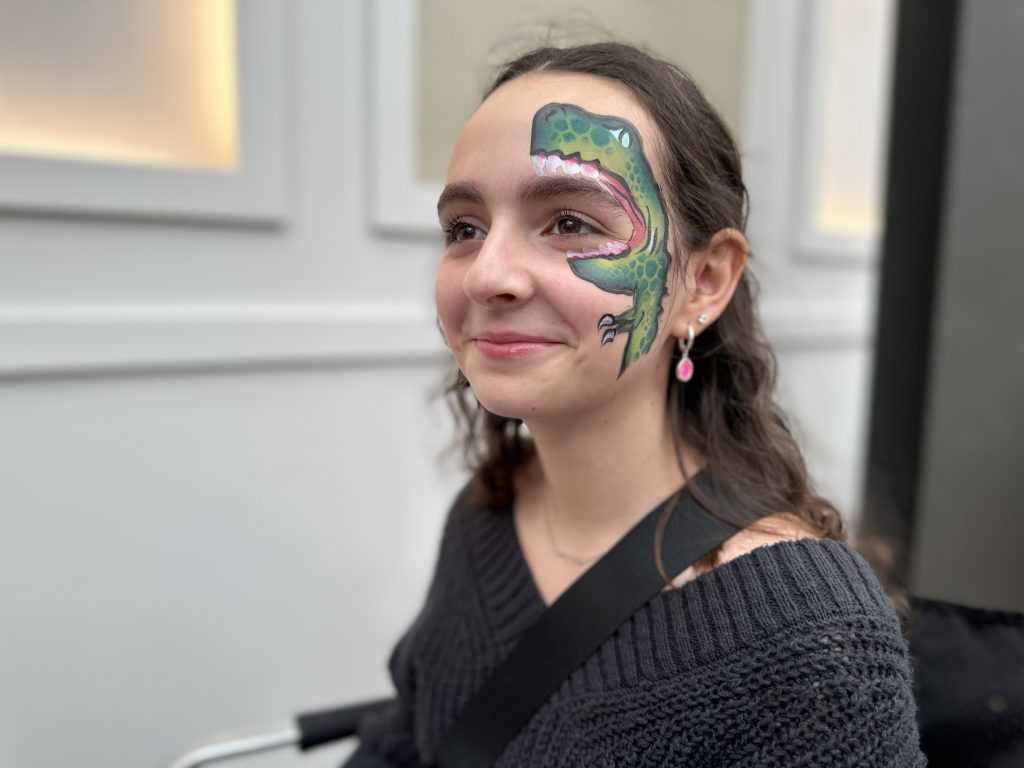
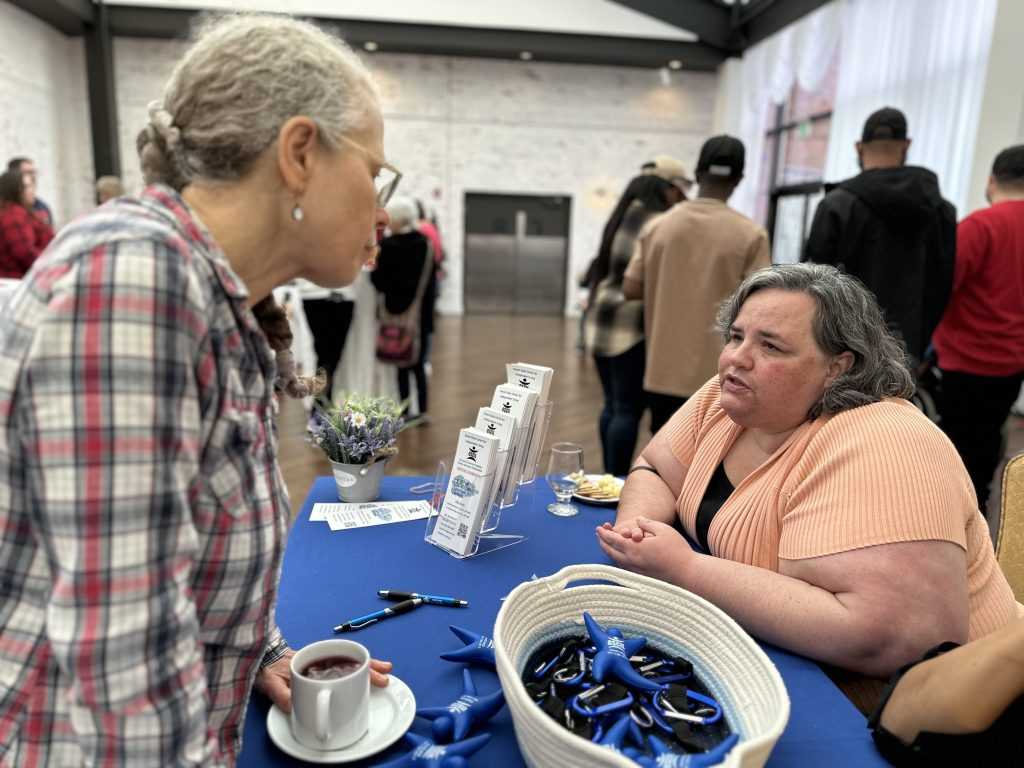
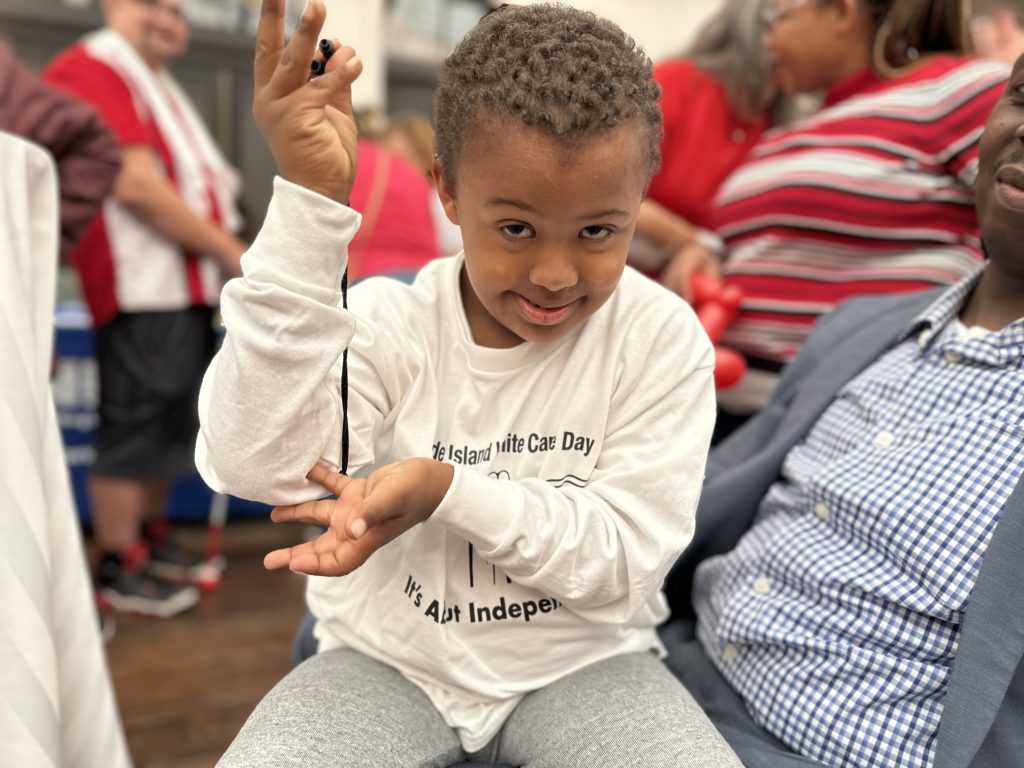



White canes were introduced in the 1930s to assist visually impaired pedestrians in traveling independently. They also helped motorists identify and yield to people using the white cane, and their use has been protected by law in the United States since that time. White Cane Safety Day, October 15, was established in 1964 by President Lyndon B. Johnson to raise awareness of people who carry a white cane.
Sponsors of Rhode Island’s White Cane Day celebration include IN-SIGHT, Rhode Island State Services for the Blind and Visually Impaired, Ocean State Center for Independent Living, National Federation of the Blind Rhode Island Chapter, Rhode Island Lions, Veterans Administration, Rhode Island Vision Education and Services Program, and Rhode Island Parents of Blind and Visually Impaired Children.
Welcoming Jenn Remmes
Jenn Remmes has been appointed Director of Development at IN-SIGHT, a Rhode Island nonprofit that inspires confidence and builds skills that help people who are visually impaired and blind to thrive and succeed. The organization annually serves more than 1,000 Rhode Islanders through a wide array of programs, including low vision evaluations, daily living and assistive technology skills training, small group skills-building workshops, community-based support groups, peer learning, and a summer camp for visually impaired and blind youth.
Jenn joins IN-SIGHT in the newly created Director of Development position to strengthen the agency’s relationships with donors and community partners while also increasing awareness of its services. The organization, which was founded as the Rhode Island Association for the Blind, will celebrate its 100th anniversary in 2025.
“I look forward to working with our amazing donors and partners to make a positive difference in the lives of people who are visually impaired and blind,” Jenn recently stated.
In 2008 Jenn joined the United Way of Rhode Island as a temporary Ambassador. She worked her way through various positions in the Resource Development department, most recently in the Director of Resource Operations role. Jenn was instrumental in helping to build 401Gives, the Rhode Island statewide day of giving, which has brought in over $10M in the last four years to over 500 nonprofits in Rhode Island.
IN-SIGHT’s Executive Director Christopher Butler said, “We are excited to have Jenn join the team. As we look towards our 100th anniversary, we are excited to develop deeper relationships with existing and new donors and to partner with them to expand our services, help more people, and educate the community about vision loss.”
In her new role, Jenn will manage the agency’s annual giving programs, develop special events, and educate donors about the benefits of charitable planned giving. She will also help communicate IN-SIGHT’s work and celebrate the achievements of its clients through social media, community events, and partnerships with local agencies and businesses.
Before working for United Way of Rhode Island, Jenn and her brother owned a weekly newspaper in Norton, MA, called the Hometown News. Jenn is a graduate of Bryant University with a concentration in marketing.
Jenn lives in Cumberland, RI. She enjoys visiting her daughter in New Mexico and hanging out with friends and family in her spare time. She likes many things, including game nights (especially trivia), yard sales, bad puns, New England Patriots, traveling, theatre, and appreciating life.
For more information about IN-SIGHT, visit our website at www.in-sight.org or via social media @insightri.
Summer Camp 2023
IN-SIGHT’s annual ten day summer camp for kids and teens with visual impairments has wrapped up for another year. A total of fourteen campers had the opportunity to kayak, rock climb, rail explore, hop aboard the Providence to Newport ferry, traverse the Boston commuter rail, get up close with dinosaurs at the Zoo, and so much more during the On the Move mobilty camp.
We appreciate the generous support of the Rhode Island Foundation, the PPL Foundation, Rhode Island Energy, the Bernhardt Foundation, the Shriners of Rhode Island Charitable Trust, and the dozens of individual donors who made this year’s camp possible.
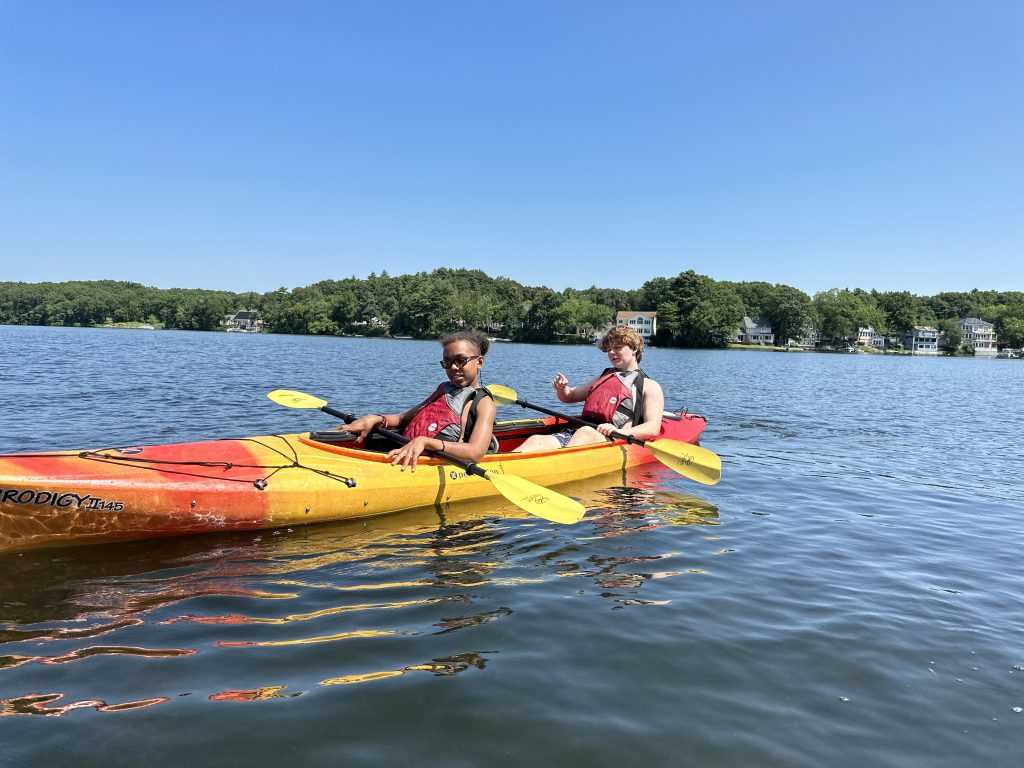
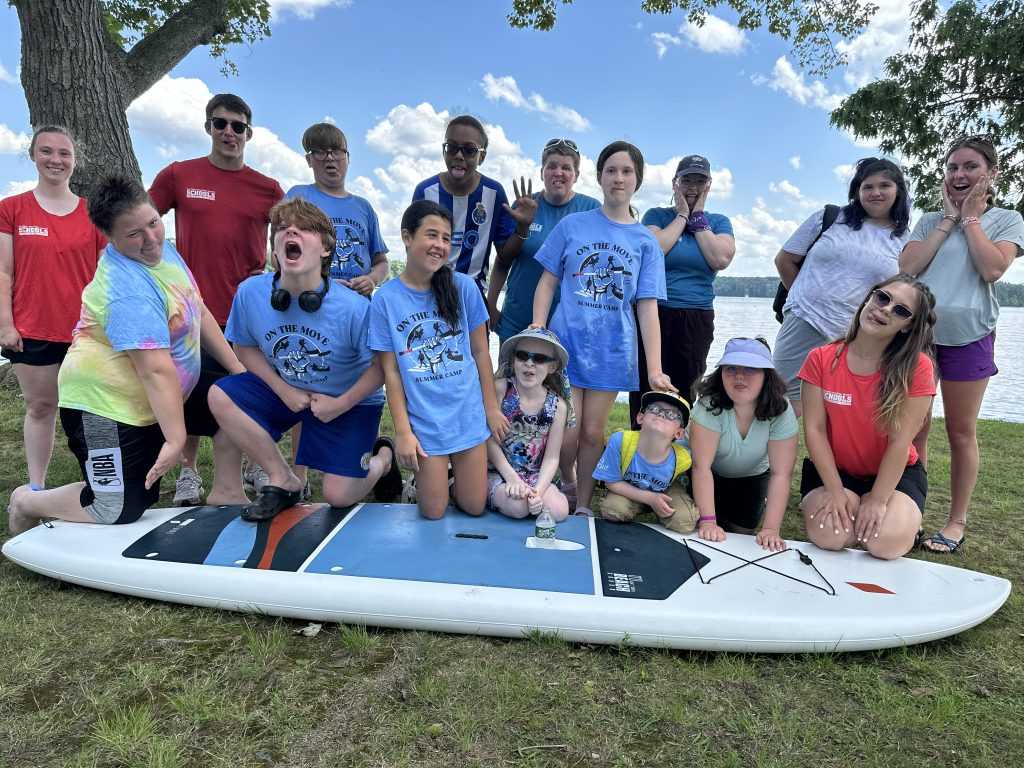

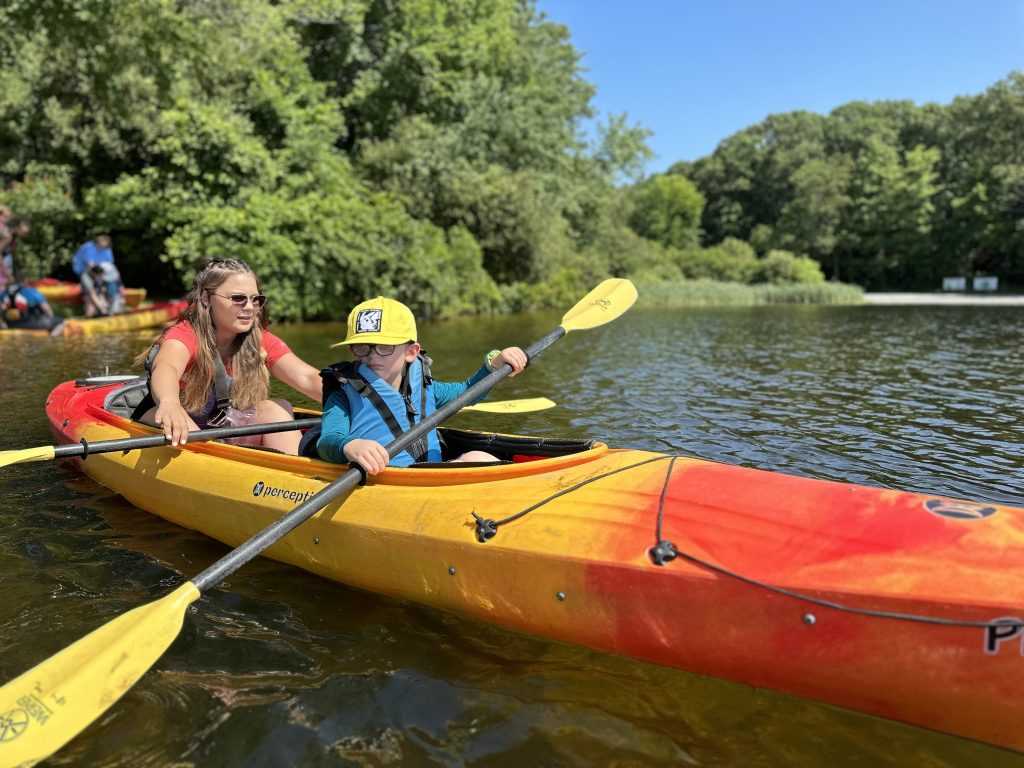
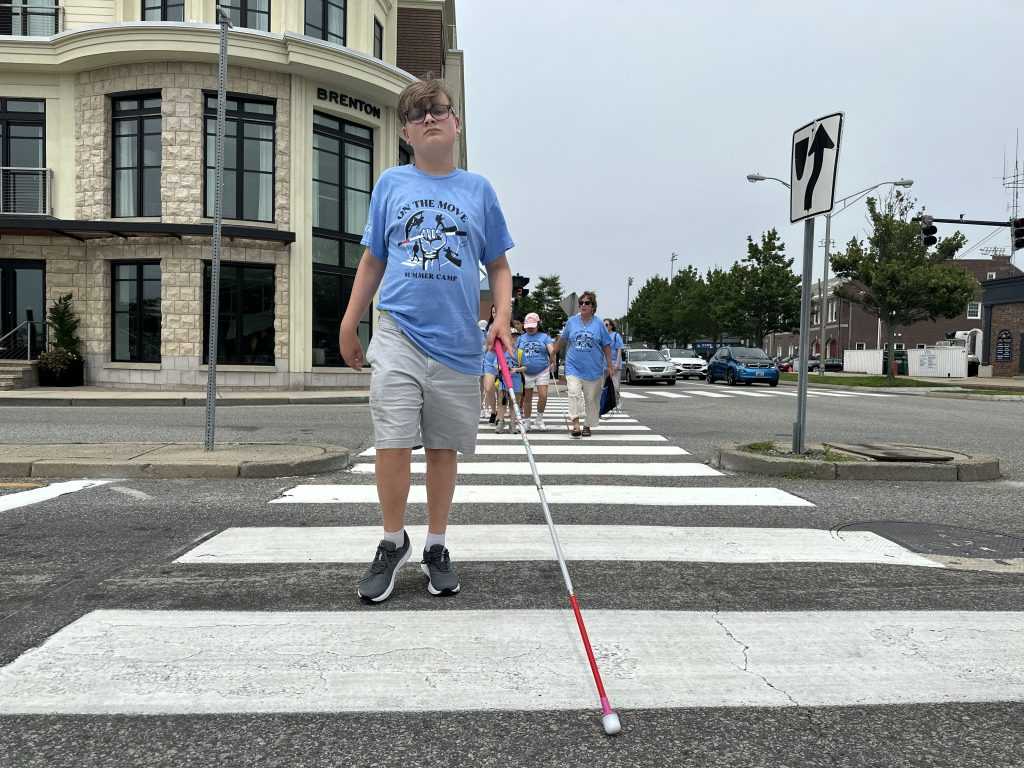
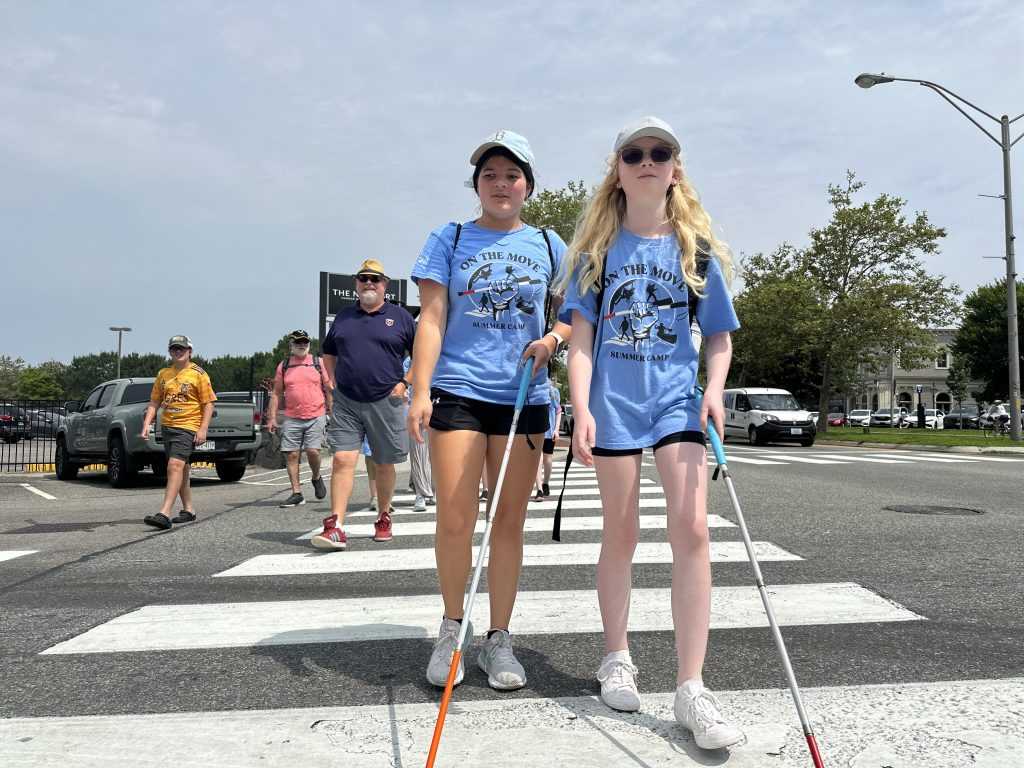
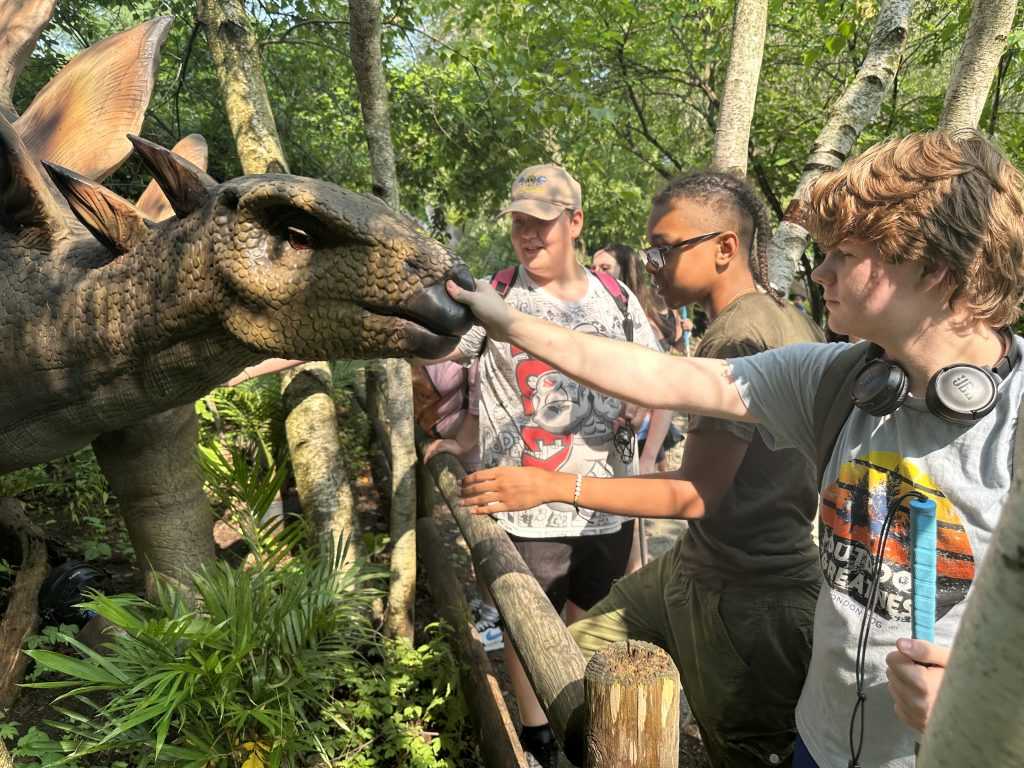
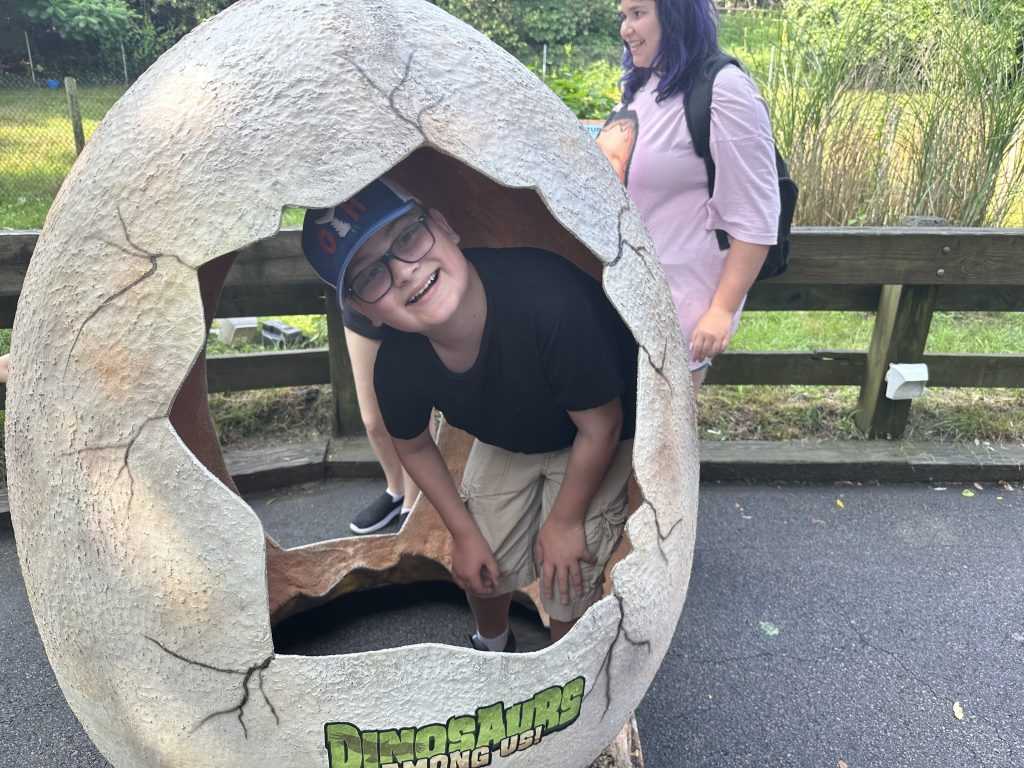


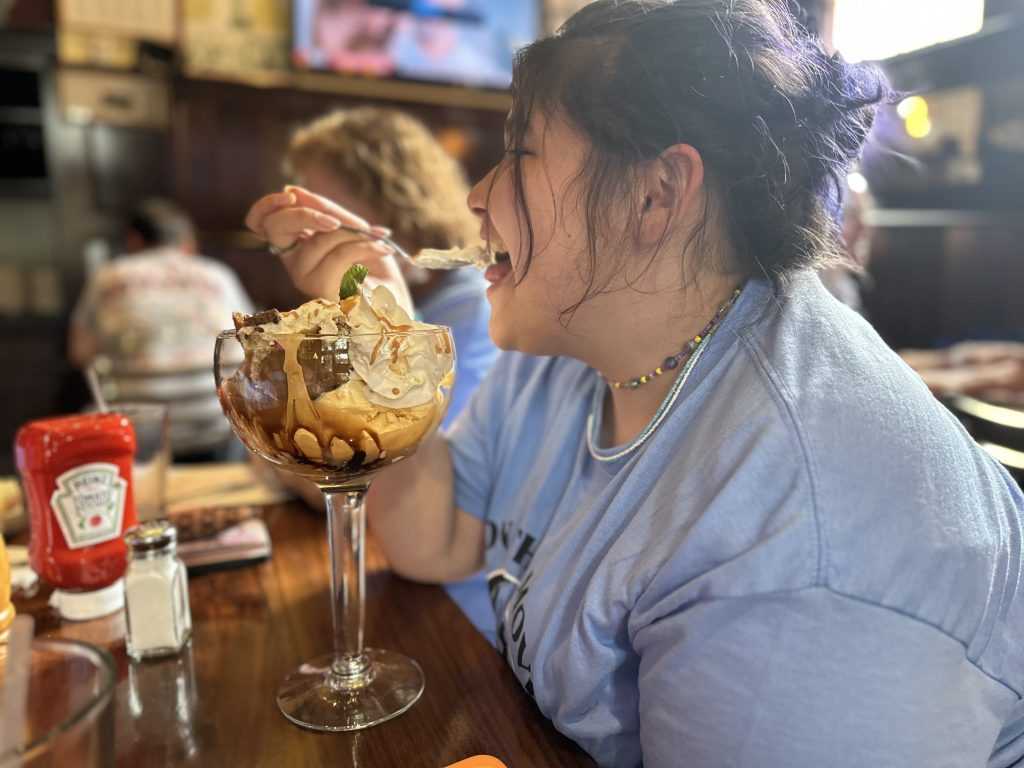



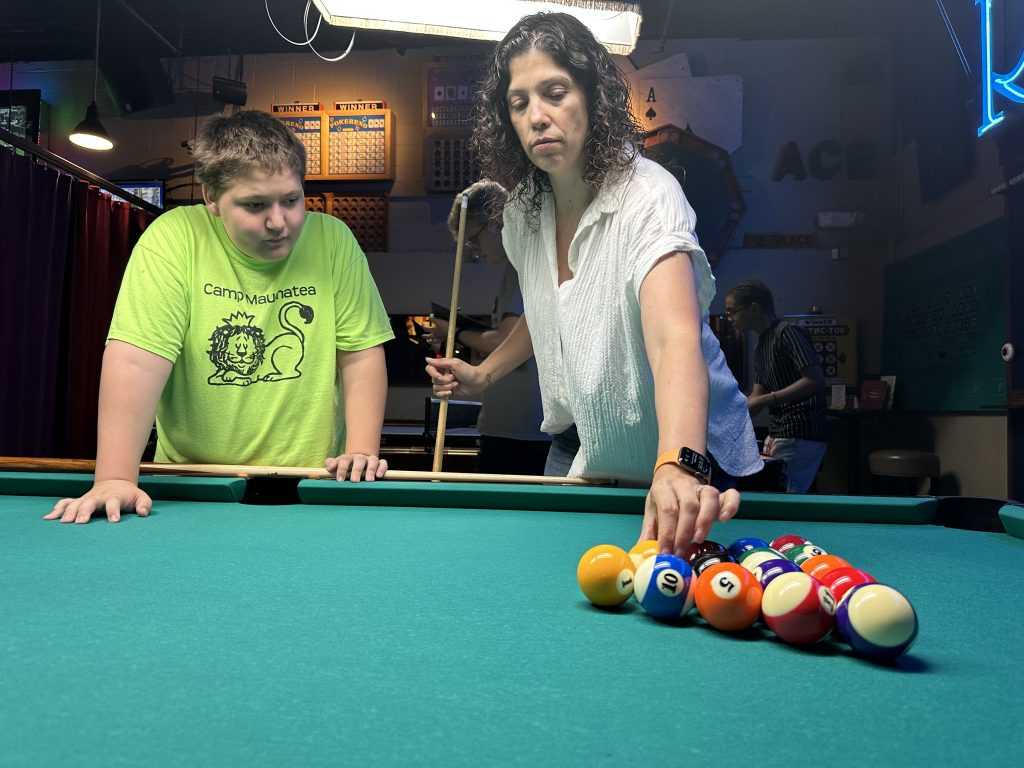
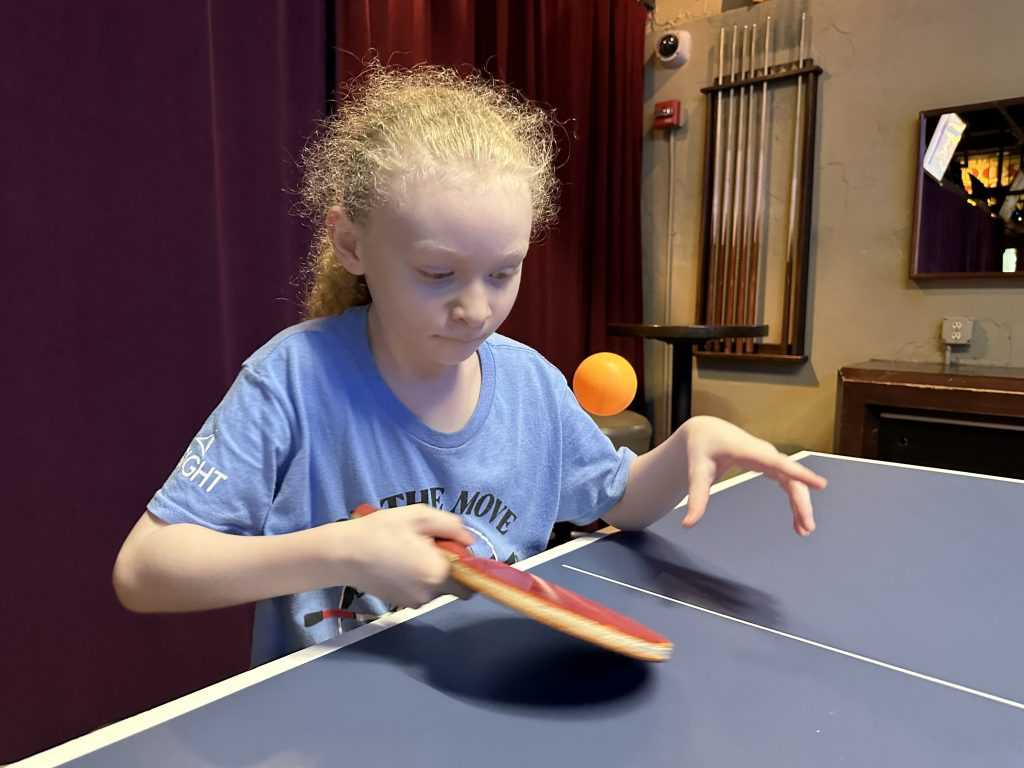

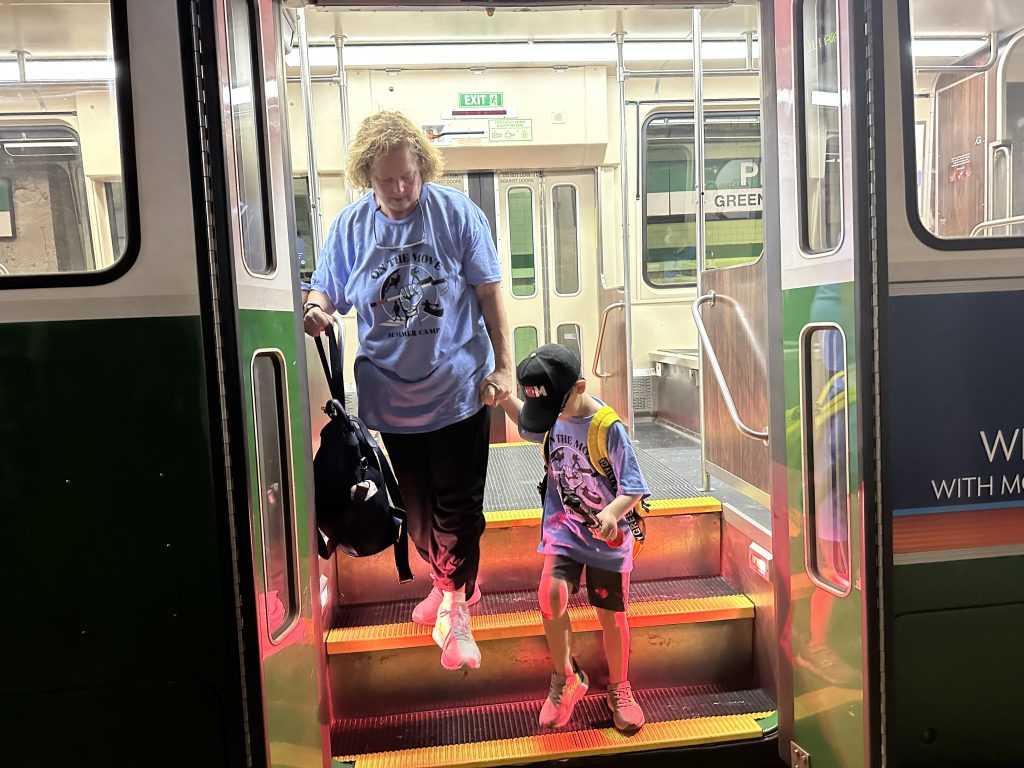
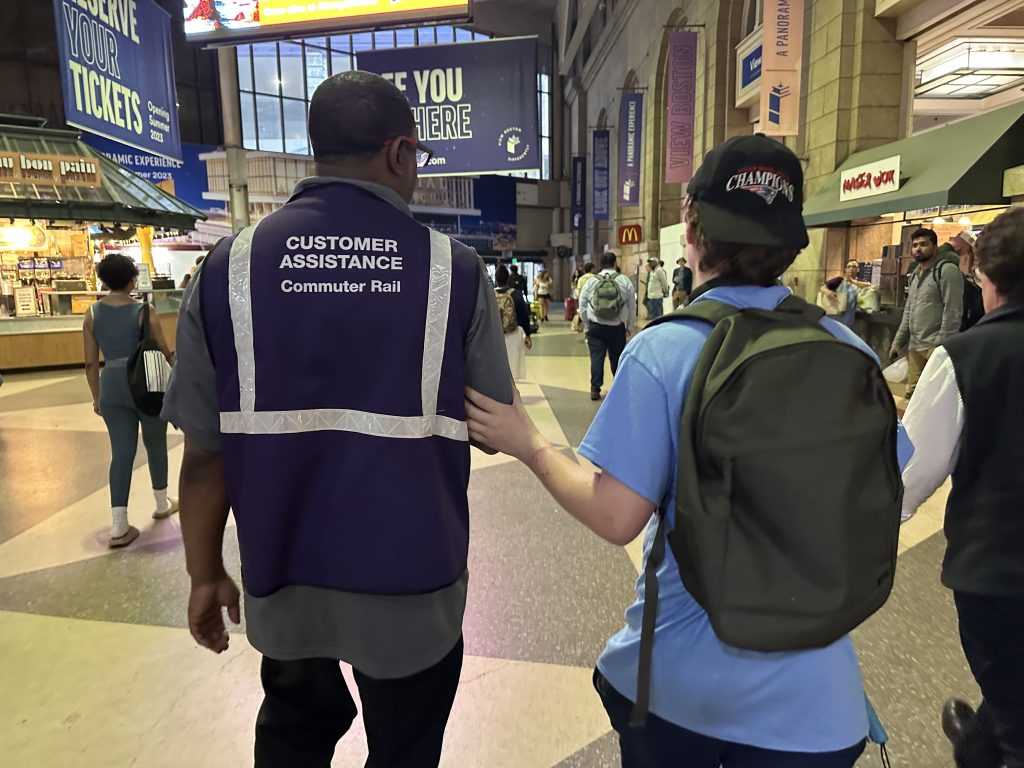

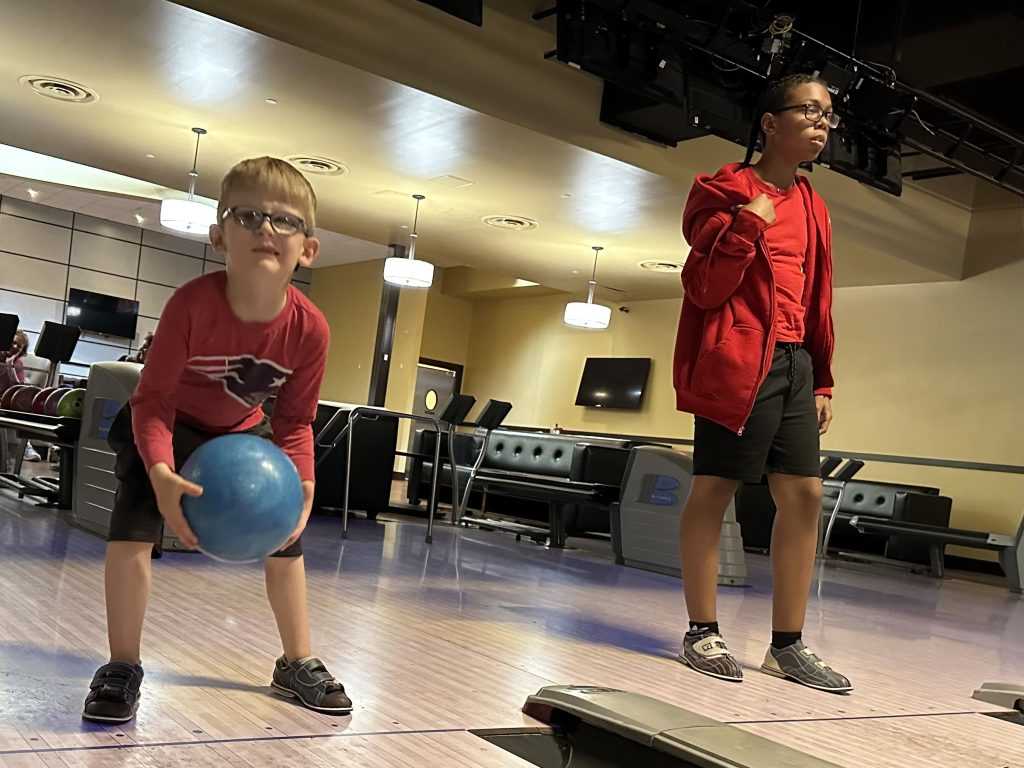

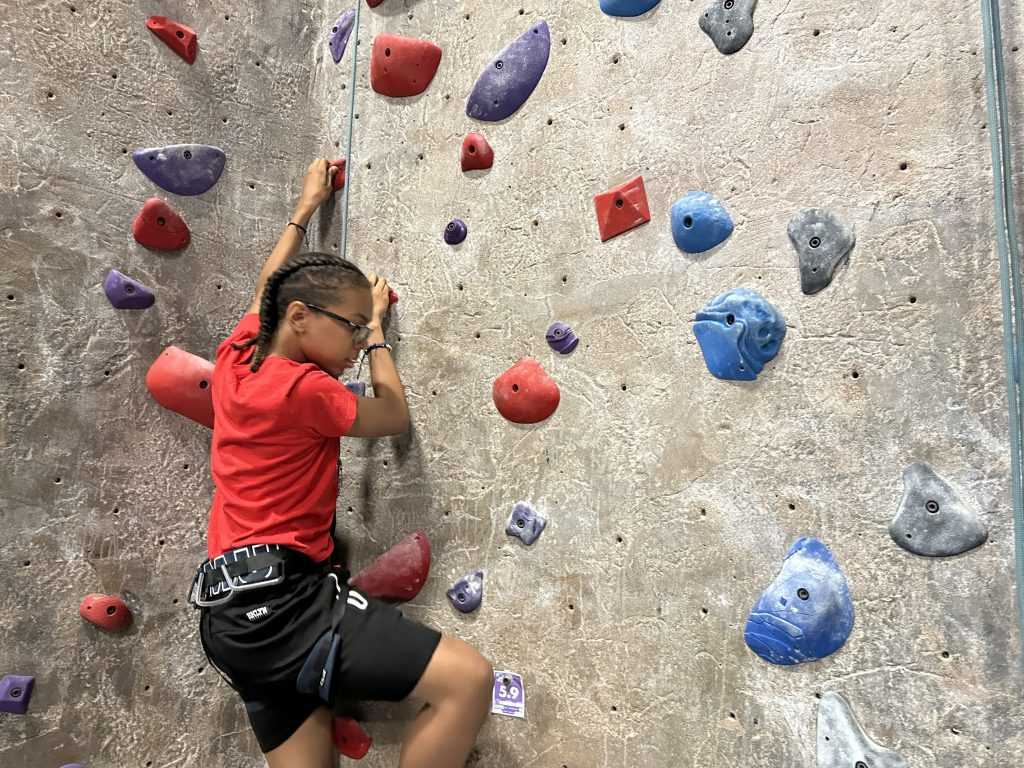
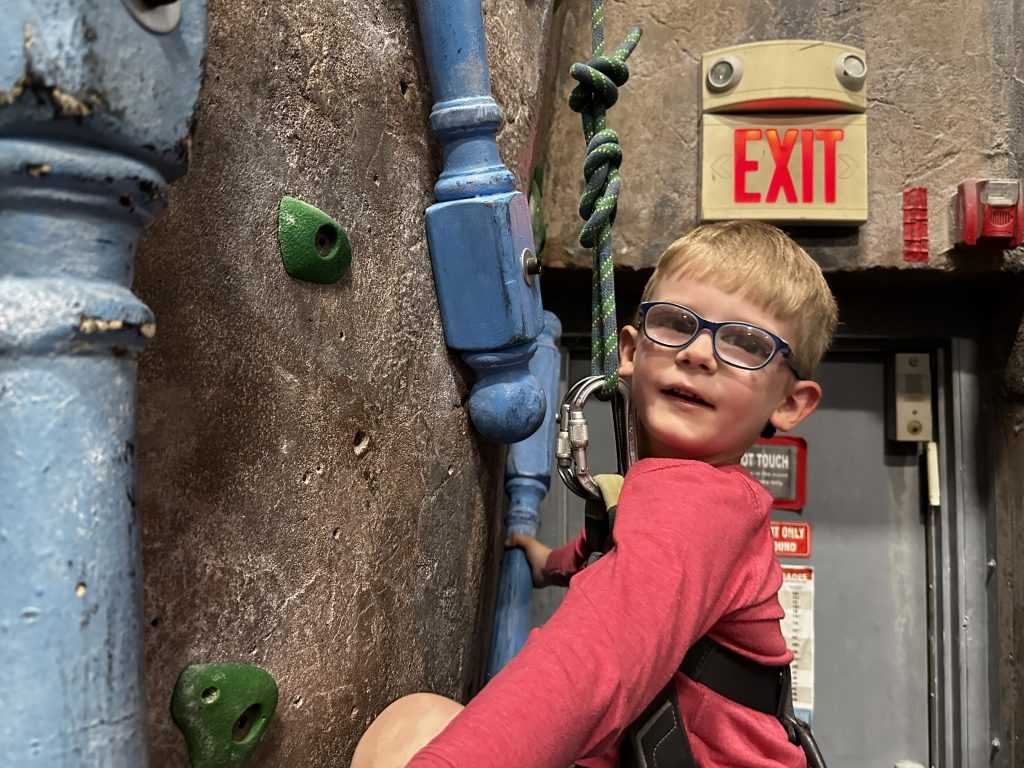
Book Club Celebrates 15 Years
IN-SIGHT’s monthly book club recently marked its fifteenth anniversary. The group meets monthly and has read and discussed more than 200 books since its founding in June 2008.
The idea came from a tour that members of the IN-SIGHT staff took of another agency that offered a very well-attended group that listened to books through the Talking Books program and then met to discuss them. Our vision rehabilitation therapist, Carla Ferreira, contacted a few clients, including the late Freda Goldman, to start a similar group in Rhode Island.
Initially, the group met twice per month, but after a couple of years moved to monthly gatherings to allow everyone enough time to read the assigned title. During the COVID pandemic shutdowns, when in-person meetings were not possible, the group continued to meet via Zoom, providing a much-needed source of socialization. While the group has returned to in-person meetings, some members with transportation issues or who reside out of state during the winter continue to participate virtually.
Each group participant selects a book provided to all members via the free Talking Books program. The ninety-minute meeting is focused on discussing the plot, characters, themes, and other topics related to the book.
In a recent survey of past and present Book Club members, 91% indicated that their primary reason for joining the group was to enjoy reading and discussing books. Many also said the group allows them to meet and socialize with others with vision impairments. Everyone agreed that they enjoy the program and that it has met most of their expectations.
The IN-SIGHT Book Club meets on the third Friday of each month from 10 AM – 11:30 AM at IN-SIGHT and via Zoom. For more information or to join, please use the Contact Form below to let us know.
Contact Form
Client Profile: David
David Hie says the key to successfully living with a visual impairment is being the same person you were before you lost your vision.
“You do things a little bit differently than you used to. A little bit slower than you used to. But, besides driving, you can still do everything you did when you had vision.”
David began having issues with his vision in 2007 at the age of 44 years old. “From the couch in our living room, I could look into the kitchen and see the clock on the microwave. That is how I would find out the time,” he says. “One day, I looked over, and I could not see the time. I thought, ‘what happened to the microwave?’ It turns out it was there. I just couldn’t see it.”
David had developed cataracts in both eyes, resulting from increased pressure caused by glaucoma. Despite surgeries to remove cataracts and drains to reduce pressure, he ultimately lost most of his vision. Today, he only sees shadows, changes in light, and some colors.
In the beginning, David says, there was a lot of sadness and stress. “I lost two-thirds of my income because I was not working, I lost my freedom and my flexibility. I did not want to be a burden to my wife and daughter. I was always the person that was there to give people rides places, now suddenly I was the one that always needed a ride.”
He remembers one day asking his daughter to take him to Marshall’s to buy underwear. “I had been to the store dozens of times, so I knew where I needed to go. I told her to go off and shop and that I would be fine. I found the underwear without a problem, but then I realized I could not read the sizes. It hit me. When my daughter returned, I told her I just wanted to leave. She offered to help, but I was just too frustrated.”
It was David’s wife who found IN-SIGHT. Here, he says he found the support he needed to get back on track. “There are people who helped that don’t even know it.”
He says that coming to support groups, Yoga classes, ceramics workshops, and other programs at IN-SIGHT has helped him to meet other people. “Listening to people’s stories and knowing that they are facing the same challenges has helped me to feel normal. I hope that sharing my experiences has helped them too.”
After being out of work for sixteen months during the early days of his vision loss, David returned to his longtime job at M-F Athletic, where he works in the warehouse part-time.
David says he likes to keep busy when he is not working. He particularly enjoys the weekly Yoga classes. Stretching and other exercises have helped him to stay in shape. “Some of my friends can’t believe that I take Yoga, but I tell them that I can bend down and touch the floor, which is something I had not been able to do for twenty years!”
David has also taken up a new hobby, indoor rock climbing. With help from his friend Steve, he has been able to learn how to climb the rock walls at Rock Spot Climbing, where he recently made it to the top of the thirty-foot wall.
He also maintains a good sense of humor when things don’t go as planned. He laughs when telling the story of mistakenly putting on his wife’s bathrobe, which was hanging on the hook next to his. “You look good in pink,” his wife told him when he came out of the bathroom.
David, who uses a long white cane to assist with mobility, says it used to bother him when people stared at him. “I realized, though, that the reason they are staring is that they have really never seen someone who is blind out in the community,” David says that by using his cane out in public, he can show that people who are blind can be independent.
While leaving Rock Spot Climbing recently, a fellow climber saw David using his white cane to navigate the building. She approached David and said that her husband had recently lost his vision and was struggling. David could answer her questions and offer advice, including that he connects with IN-SIGHT for services.
David is the first to admit that living with a visual impairment is not always easy. “I miss driving every day. People tell me I’ll get used to it, but I won’t. If I plan to have dinner at Chelo’s and then decide at the last minute to go to Davenport’s instead, I can’t make that change because too many arrangements had to be made to get me to Chelo’s. That’s the part that people don’t understand.”
Despite the challenges, David has used his humor, determination, and support from his family to live a full life. And he is always open to adventure, including plans sometime soon to try out axe throwing at a center next to the rock-climbing gym.
Going Blind Film Screening
Saturday, April 1
1:00 PM – 3:30 PM
Warwick Public Library
600 Sandy Lane, Warwick, RI
Going Blind is a feature-length documentary about vision loss in the United States. It interweaves Joseph Lovett’s struggle to keep his glaucoma at bay with the stories of six people he meets dealing with different sight loss levels.
While initially living with a visual impairment can be overwhelming, this film demonstrates how much is available regarding vision enhancement techniques, low vision services, and technology to engage people with sight loss.
The film is a great resource for those living with vision loss and family and friends who may be struggling to understand the process and the best ways to adapt emotionally and practically. After the free screening of the film, there will be an opportunity for questions and answers. Information about resources will also be available.
To register, complete the form below:
Newport Satellite Programs
Client Profile: Pauline
When Pauline Proulx was in her late thirties, she realized she had eye issues. She was missing things that other people seemed to be able to see. Nothing a pair of glasses could not solve, she thought.
But after ten hours of testing at a specialist’s office in Boston, it became clear that glasses would not be able to correct the issues she was confronting. Pauline was diagnosed with retinitis pigmentosa, a genetic degenerative eye disease. Over time, cells in the retina break down, causing vision loss. For many, the condition makes it look like you are peering through a paper towel tube, seeing what is right in front of you but nothing on the periphery. Over time, that field of view gets smaller.
With her diminished vision, Pauline had decided on her own to stop driving at night. Then her local ophthalmologist told her that driving during the day was no longer safe.
Pauline says that at that point, she went into shock. There was a numbness that overtook her. She was unable to think or feel anything.
She took a leave of absence from her job.
Having two young children with school and other activities to get to and routine shopping and other travel needs, she worried about how her family would manage with only her husband available to drive.
Pauline says, “I just tried to pretend that my vision was fine.”
While social workers from IN-SIGHT and Rhode Island State Services for the Blind reached out to her to offer solutions, she was just not ready. “I was not fully comprehending what was happening. I just kept telling myself to act normal.”
During those times when she could not do things because of her diminished vision, she would make excuses or blame it on clumsiness.
After spending three years trying to figure things out, she eventually returned to work part-time doing medical transcription.
As years went by and her vision continued to diminish, she knew she needed to do something more. “I wanted to be independent. I wanted to do things. I was tired of missing out,” she said.
Twenty years after first connecting with IN-SIGHT, she reached out again, looking for help with mobility. Given her lack of peripheral vision, she was concerned about safely getting from place to place.
Pauline connected with a mobility teacher who taught her the proper techniques for moving about, using the white cane to provide information that would keep her safe. “Initially, I was embarrassed to use a long white cane in public. Ultimately, I realized that it was a necessary tool if I wanted to remain independent.”
She also began attending IN-SIGHT’s support group meetings, Yoga classes, and the monthly Book Club, where she met others in a similar situation. Knowing she was not alone and being able to share what she had learned with others was a big help.
Through various free workshops, she learned new skills that helped build her confidence and independence.
Today, Pauline travels between family homes in Rhode Island and Florida, confidently navigating transportation and airports independently. She spends a lot of time doing things with friends and living the life she wants.
This summer, she received a dog guide to further assist with her mobility needs. “Having a dog guide is a whole new experience for me, but it has led to even greater independence,” she says.
Pauline’s advice to those in the same place she was is to “realize that you are not alone, take advantage of the resources available to you, and most importantly, don’t worry about what other people think.”
If you find yourself in a place similar to Pauline, call us. We can help you connect with programs and services to increase your independence.
Contact our Client Services team at (401) 941-3322, ext. 121, for an initial conversation or to attend an upcoming VISION Group.
IN-SIGHT Radio Signs Off
After more than forty years, IN-SIGHT’s radio reading service signed off the air on December 31, 2022.
Since 1981, hundreds of volunteers brought the printed word to thousands of visually impaired and blind Rhode Islanders. However, technological advances significantly changed how people access news and information.
To be sure, the decision was bittersweet.
We have always had some of the most dedicated volunteers anywhere, and not having them here every day is a significant loss. We are so thankful to all the people who have generously given their time as readers, production assistants, engineers, and receiver repairers.
On the other hand, the reduced need for this program is a recognition that many people with visual impairments now have much better access to news and information, which is something to celebrate.
The Rhode Island Radio Reading Service started as an all-volunteer program in 1981. The service merged with the Rhode Island Association for the Blind, forming IN-SIGHT a few years later.
With newspapers being the primary source of information at the time, volunteers read them through a closed-circuit signal, providing critical access to information for people who could not access print.
Several years ago, a transition to digital technology strengthened our over-the-air signal and created the opportunity for listeners to access our programming through the IN-SIGHT website as well as Alexa-enabled devices.
Ironically, the same technological advances that have improved access to IN-SIGHT Radio’s signal have also led to its demise.
When our radio reading service began, local newspapers brimmed with the latest goings-on in the community. There was so much news on many days that our volunteers would struggle to choose which stories they had enough time to read and which would end up on the cutting room floor.
However, the growth of the internet, social media, streaming video, expanded television news channels, and other sources of information have led to a precipitous drop in the number of people reading newspapers. Subscriptions to the Providence Journal, for instance, have dropped more than 80% since 1990. The resulting loss of revenue has led to cost-saving cutbacks in content, making it a challenge on many days for our volunteers to find enough original local news to fill the allotted time slots.
The decline in people reading newspapers also meant less interest in our radio reading service. A survey found only a tiny handful of people who reported listening, and most of them only for a short time on some weekday mornings.
We have worked with these listeners to transition them to other free and easy-to-use options, including NFB Newsline, a telephone-based reading service, and the Talking Books program.
While this marks the end of a long and valued program, it also presents an opportunity for us to invest in new initiatives that will help people with visual impairments be more confident and independent. We look forward to announcing plans for expanded programming in other areas.
Profile: Artist Ray Gonsalves
At a recent Positive Outlook support group meeting, the featured speaker was a talented artist who exemplifies the power of positive thinking.
Raymond Gonsalves has been living with visual impairment since birth, but he has never allowed those challenges to deter him.
Ray’s interest in art started at a young age, following the example of his brother, an accomplished artist in his own right.
In middle school, Ray found that he had a knack for drawing and started sketching cars and scenery. His talent got noticed and he began working as a freelance artist, painting various murals, and being featured in several clubs in the Providence area.
As he advanced through school, he received formalized training in his craft, becoming involved in an art magnate program, and then attending the University of Rhode Island where he attained a Bachelor of Fine Arts. He has also attended the Rhode Island School of Design for graphic arts and filmmaking. His artwork has been featured in several art shows in Rhode Island.
Ray paints in a highly realistic style and very much enjoys painting cars. He usually begins with a line sketch on canvas in pencil to map out the overall composition of the piece. After the line sketch has been completed, Ray begins the painstaking process of filling the lines with paint.
He checks his reference photo on a laptop, employing a zoom-in feature to enlarge a single section, becoming the focus for his painting session. It is a slow process of zooming into the image on his laptop and then using a handheld magnifier to assist him in applying the paint to the canvas.
Though his paintings are very realistic, Ray also employs his own creativity, making modifications or adjusting the backgrounds to whatever he likes.
Besides painting, Ray has developed many other artistic endeavors, including graphic design,
filmmaking, 3D printing, and more recently digital music.
When asked what his challenges are, Ray could not think of any, except for one – he has too many projects to finish! Ray is proof that a positive outlook goes a long way in reaching your goals.







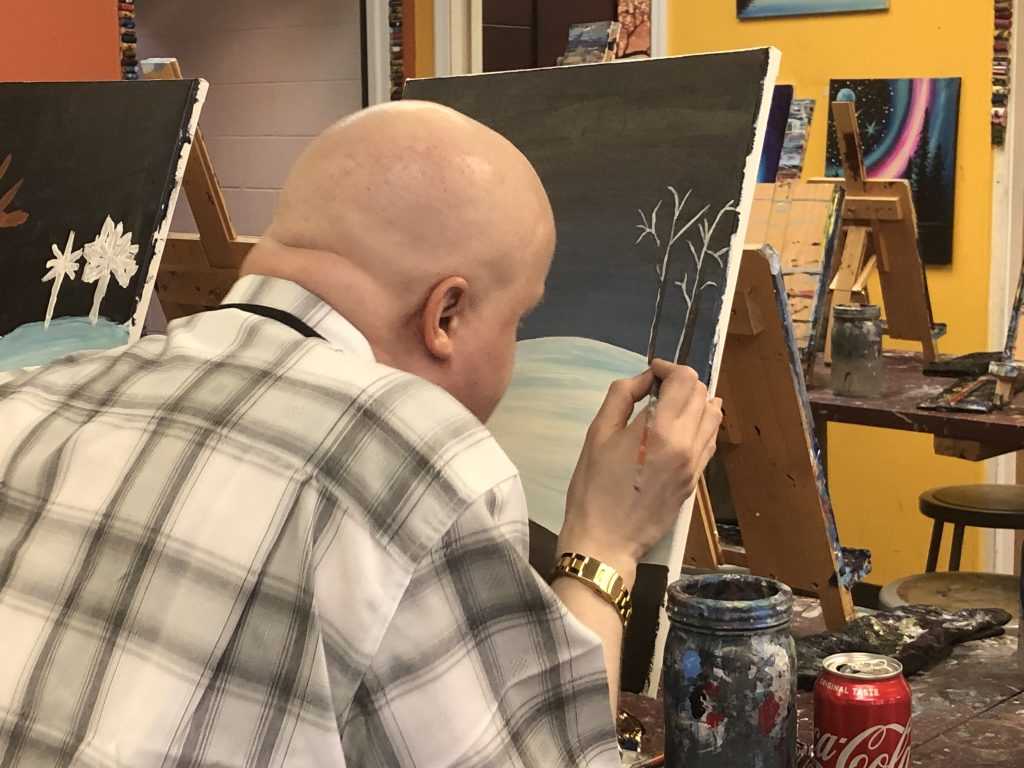
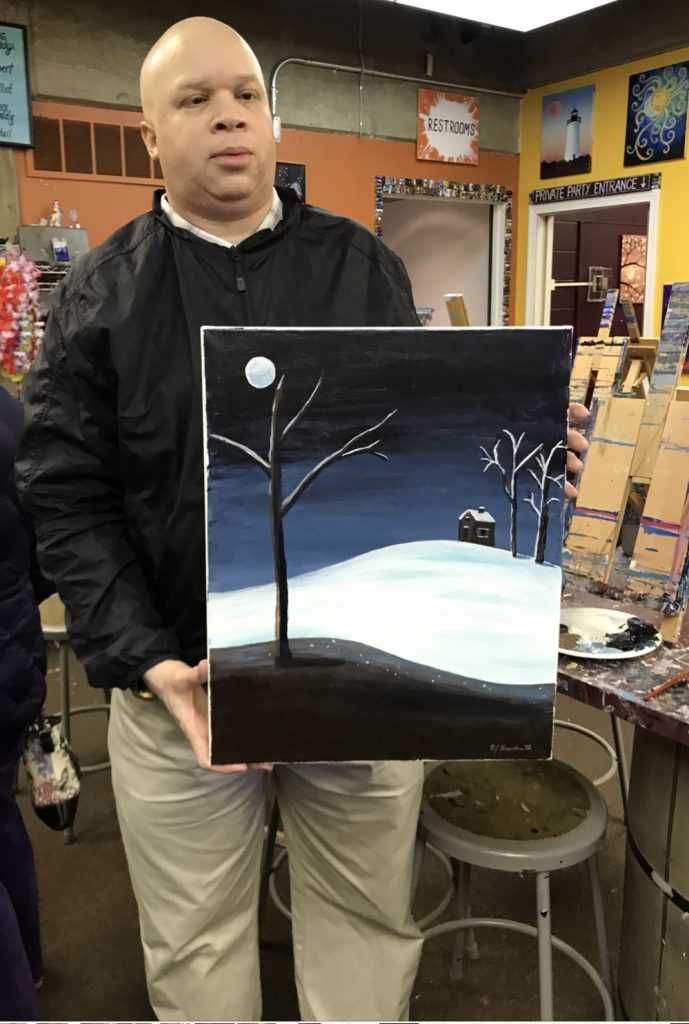

RI Parents of Blind & Visually Impaired Children
The Rhode Island Parents of Blind and Visually Impaired Children is a group that provides an opportunity to connect with and learn from other parents and caregivers.
Accessible Word Document of RIPBVIC and RIVESP PPT for Screenreaders (12/9/21)
PowerPoint Presentation to the Vision Task Force (12/9/21)
Compilation of Information to Support RIPBVIC and RIVESP Educators’ Presentation (12/9/21)
